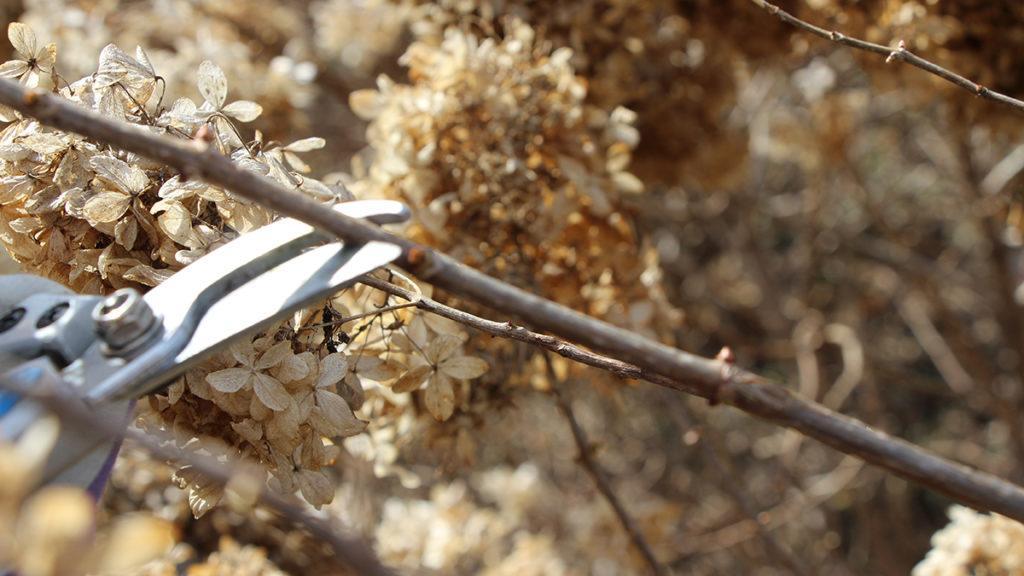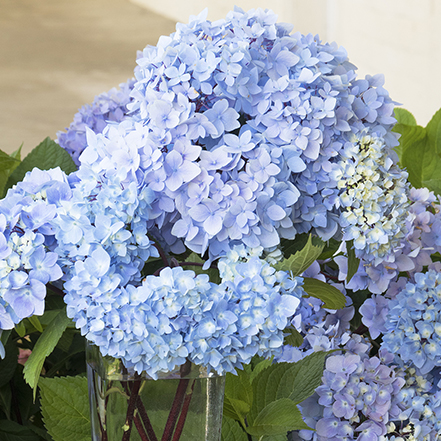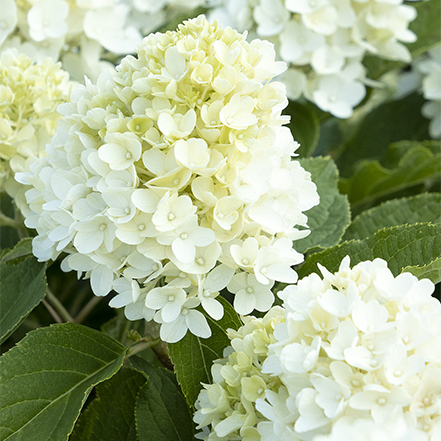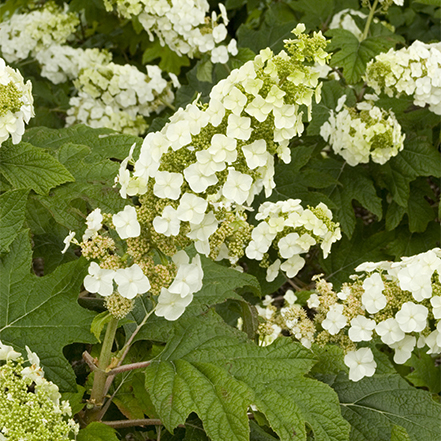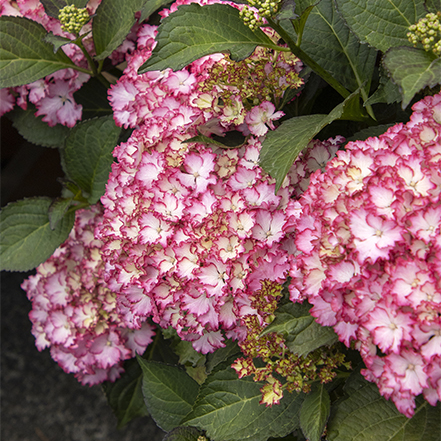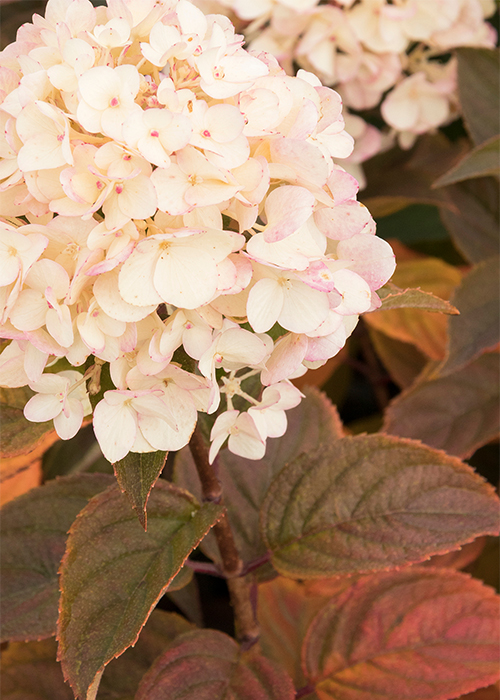Here’s expert advice from guest bloggers Megan Nichols and Jessie Jacobson of Tonkadale Greenhouse. Located in Minnetonka, MN, they discuss the ins and outs of pruning hydrangeas. (Their zip code may just contain more hydrangea trees and shrubs than just about anywhere in the U.S. In other words, they know!)
Knowing how to prune hydrangeas is is actually quite simple once you know what type of hydrangea is growing in your garden. Common hydrangeas belong to four different species but there are 5 common types, each with slightly different pruning requirements. Before you reach for the pruners, determine which species you’re growing. Browse hydrangeas on Monrovia.com or use the filters on My Plantfinder to get help figuring it out. Once you've determined which type of hydrangea you're dealing with, take a look below. Here you'll find out exactly how and when to prune your hydrangeas.
Need advice on putting your hydrangeas to bed for the winter? We’ve got you covered.
Old Wood vs New Wood
Step one to knowing the best time to prune hydrangeas is determining if they'll bloom on old or new wood. Here’s the definition of each; we break down which is which below. (This is not as horticultural geeky as it sounds, we promise.)
“Old wood” means that buds are formed for next year's bloom at the end of the current growing season. These are formed on stems produced during the previous summer.
• Typically pruned after flowering or early fall to encourage new flower buds on old stems.
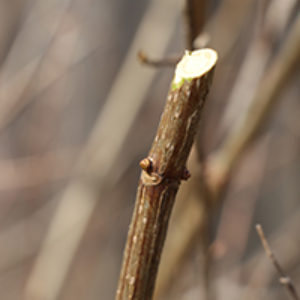
Prune hydrangeas at a 45-degree angle right above a bud. This is usually where a leaf or leaves are attached to the stem.
“New wood” means stems that have emerged during the current growing season. Buds are formed on this new growth in the current growing season.
• Typically pruned in late winter or in early spring to encourage new stems.
If you get the timing wrong, don’t worry. These are forgiving plants. You may go a season without blooms but, with proper timing, you can expect flowers the following year.
How and When to Prune Big-Leaf/Mophead/French Hydrangeas (H. macrophylla)
Bloom on old wood: prune in summer or early fall
Remove up to one-third of the total stems each season, starting with the weakest shoots, both old and new ones. Cut these right down to the ground and remove them. What’s left is a combination of old productive wood and strong new stems that will flower next season.
Pictured left: Blue Enchantress® Hydrangea
How and When to Prune Smooth Hydrangeas (H. arborescens)
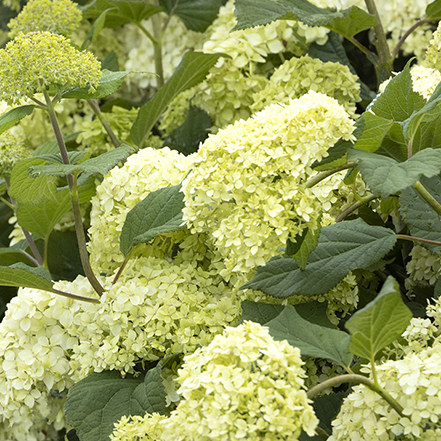
Bloom on new wood: prune in late winter or early spring
Older varieties such as the classic ‘Annabelle’ can become floppy and unruly. Newer varieties like Seaside Serenade® Bar Harbor Hydrangea have been bred to be more compact. Either way, cut back to the ground (don’t be afraid to prune aggressively).
Pictured left: Seaside Serenade® Bar Harbor Hydrangea
How and When to Prune Panicle Hydrangeas (H. paniculata)
Bloom on new wood: prune in late winter or early spring
You may not need to prune panicle hydrangeas every season. If they seem overgrown or floppy, especially after a hard rain, pruning will tune them up. Take off up to 30%-50% of the old growth, before they leaf out, to create a roundish shape.
Pictured left: Candy Apple™ Panicle Hydrangea
How and When to Prune Oakleaf Hydrangea (H. quercifolia)
Bloom on old wood: prune in late summer or early fall after blooming
Oakleaf hydrangeas want to be left alone to do their thing. They require very little pruning; limit to the removal of dead or broken branches as needed. You can improve the shape of the plant by pruning it after it finishes flowering.
Pictured left: Snow Queen Oakleaf Hydrangea
How and When to Prune Reblooming Hydrangeas
Bloom on new and old wood: prune anytime
These bloom on growth from the current year as well as previous years. The "old wood" buds provide early season color. While blooms forming on current season growth flower later, lasting through the end of the season. All they really need is deadheading spent flowers and pruning out dead or weak stems.
Pictured left: Seaside Serenade® Fire Island Reblooming Hydrangea
Hydrangeas in Winter
We love to leave some of the spent blooms on our hydrangeas well into fall and winter. Here they'll sparkle in the frost or add a touch of color to the winter landscape. Other cut flowers are brought inside for pretty winter arrangements.
Pictured left: Candy Apple™ Hydrangea in fall.
Tools You'll Need For Pruning Hydrangeas
Ready to start pruning your hydrangeas? Here's what you need (and what's optional):
- Bypass pruners: These pruners are the main tool you need for pruning hydrangeas. Bypass pruners function like scissors, with one blade sliding past the other to make a clean cut, which is important for the plant's health. Avoid anvil pruners, which crush branches and can damage the hydrangea. Look for pruners that are comfortable to hold in your hand and have sharp blades.
- Loppers (optional): If you have thicker branches (up to 1 inch in diameter) to remove from your hydrangea, loppers will be a helpful tool. Loppers are similar to bypass pruners but with longer handles and larger blades that can handle thicker branches.
- Pruning shears (optional, for very thin stems): Pruning shears are a good option for trimming very thin stems or spent flowers on your hydrangeas. They are smaller and more maneuverable than bypass pruners but may not be necessary for general pruning.
- Oil for cleaning and lubricating the tools: Keeping your pruning tools clean and sharp is important for the health of your plants and your safety. After each use, wipe down the blades with a damp cloth to remove any dirt or sap. Apply a few drops of oil, like canola or vegetable oil, WD-40, honing oil, or even household three-in-one oil, to the blades to prevent rust. Wipe off any excess oil before storing your tools.
Other Common Questions about Pruning Hydrangeas
What happens if you don't cut back hydrangeas?
Certain hydrangea varieties, like panicle and compact reblooming hydrangeas (like Seaside Serenade®), don't require pruning and may benefit from keeping the dried flower heads over winter for added visual interest in your garden. However, older and larger varieties benefit from pruning.
Remember that skipping pruning won't necessarily harm your hydrangeas in the short term. They may still flower, and some gardeners prefer the natural, unpruned look. Here's what could happen if you don't cut back your hydrangeas:
- Reduced flower size and showiness: Over time, unpruned hydrangeas can develop a leggy appearance with fewer flowers. This is because new flower growth typically happens on younger stems. Without pruning to encourage new growth, the plant puts its energy into maintaining existing branches, leading to smaller and less impressive blooms.
- Tangled and overgrown appearance: Hydrangeas are naturally bushy shrubs, and without pruning, they can become overgrown and messy-looking.
- Potential for disease: Dense, unpruned hydrangeas usually have poorer air circulation, which can create an environment more favorable for fungal diseases.
Should I cut off brown hydrangea blooms?
In most cases, removing brown hydrangea blooms is a good idea. Deadheading keeps your plant neat and tidy and encourages new blooms on certain varieties. However, there are a few exceptions to consider.
Leaving the last blooms on the plant through winter can help protect the new buds in cold climates. Additionally, some hydrangeas, like Seaside Serenade blooms, stay attractive for a long time without turning brown. In this case, it's up to your preference whether you want to remove them or enjoy the color they age.
To deadhead, use sharp pruners to cut the stem of the spent bloom just above a set of healthy leaves. For reblooming hydrangeas, deadhead throughout summer. Stop in mid to late fall to allow the plant to set buds for next year's blooms.
How do I keep hydrangeas blooming all summer?
Here are some things you can do to encourage your hydrangeas to bloom all summer long:
- Provide the right light: Hydrangeas generally prefer morning sun and afternoon shade. Some varieties, like panicle hydrangeas, can tolerate more sun, but all hydrangeas will wilt and struggle to flower if they get too much hot afternoon sun.
- Water deeply and regularly: Hydrangeas are thirsty plants and need consistent moisture throughout the growing season. Aim to water them deeply several times a week, especially during hot and dry weather. The soil should be moist but not soggy.
- Mulch around the base: Adding a layer of mulch around your hydrangeas will help retain moisture in the soil, regulate soil temperature, and suppress weeds that compete for water and nutrients.
- Deadhead spent flowers: Regularly remove faded flowers throughout the summer. This will improve the plant's appearance and encourage new blooms to form.
- Prune strategically: Pruning time depends on the type of hydrangea you have. Bigleaf hydrangeas set their flower buds on old wood, so they should be pruned in late summer or early fall. Other hydrangeas, like smooth hydrangeas, flower on new wood and can be pruned in late winter or early spring.
More Resources for Caring For and Designing With Hydrangeas
- See where hydrangeas fit into a beautiful landscape design with our free "Simply Beautiful" garden design guide.
- Get help using hydrangeas in your plant color palette with our free "Shade of Beautiful" guide to designing with color.
- Sign up for the Grow Beautifully newsletter for more resources on garden design, plant care, and plant choices.




